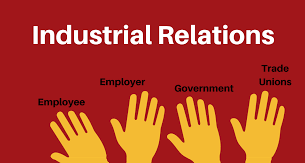The new labor codes go a long way to reflect the current economic structure and include more firms and subordinates and to make legal construction much easier, reducing the cost of the following firms. This was a need for an hour and will further our goal of facilitating business and increasing global competitiveness.
Four new employee codes provide greater independence for employers. The maximum size limit that operates under multiple operations has been revised which will encourage firms to grow larger. For example, the limit on the need for a previous government permit for retrenchment and retrenchment has been increased from 100 employees to 300.
Since most of the earlier labor laws were based on the size of the firms, they formed a framework for incentives where the firms preferred to remain small. For example, the Industrial Disputes Act (IDA), 1947 (Chapter VB) authorized firms with more than 100 employees to obtain a permit from the Government prior to retrenchment, while firms with less than 100 employees were exempted from the need to obtain this permit. Given the transaction costs associated with such rules, naturally most firms prefer to stay within the 100-employee limit. Similarly, firms avoided entering the Factories Act by keeping their staff numbers below 20 (10 without power). The Economic Survey 2018-19 states that fisheries (i.e., firms younger and older than 10 years), which control the Indian economy, are slowing down job creation and productivity. While dwarfs account for half of all firms in formal production by number, their share of employment is only 14.1 percent and slightly less than 8 percent on Net Value Added. The small size of the firms means that the firms cannot benefit from the standard economy, which is the basis for competitive markets such as exports.
One result of such limitation was the division of labor market between formal and informal. Because producers tend to have smaller firms, the vast majority of workers stayed out of the formal employment program. It is worth noting that the basic purpose of labor policy is to provide workers with social security, but in the former regime many labor laws protected workers in the lower legal sector with greater negotiating power while leaving workers in the informal sector. In addition, gig workers and platforms could not be covered under some of the previous labor laws.
Some industry-specific definitions have been updated to 20 (out of 10) workers in buildings where the production process is carried out using energy, and 40 workers (out of 20) of buildings where they are made without the use of energy. For contract employees, the Code will apply to institutions or contractors who employ 50 or more employees (any day in the past one year), up from 20 in the previous administration. New labor laws also include gig economics and platform operators and aggregators such as horse-sharing services, food and food delivery services, content and media services, and e-market locations. The scope of the Employees Provident Fund Organization (EPFO) has also been expanded and now all institutions with 20 or more employees will be considered. As a result, most employees will be covered by this public safety law.
To make the lease easier, the new law sets out one license for firms to hire contract workers in various locations instead of the old state-of-the-art licensing system. The definition of immigrant from different countries has been changed to include any person who travels alone to get another job. There is also the provision of certain benefits for foreign workers. These include the option of obtaining the benefits of a public distribution scheme either in the country of origin or in the form of employment, access to benefits derived from the building and other construction funds in the case of employment, as well as insurance and provident fund benefits available to other employees in the same area.
Labor laws are one of the most complex and controversial issues in India. The rest of the labor economy, like India, should protect its workers but the laws that govern only this policy make it difficult for businesses to operate. This prevents business expansion that creates limited job opportunities, making both teams more efficient, i.e., employer and employee. In India, labor is the subject of a common list and therefore has centralized laws.




